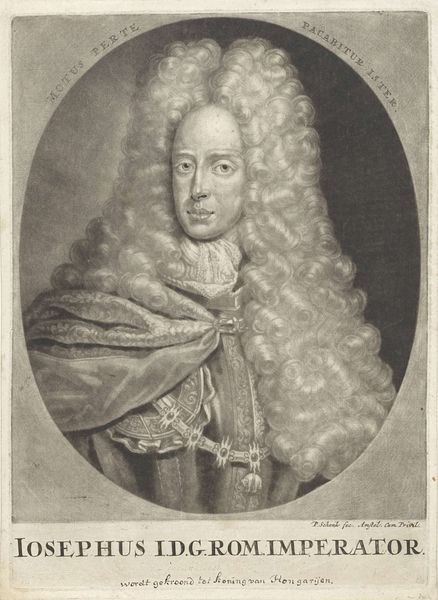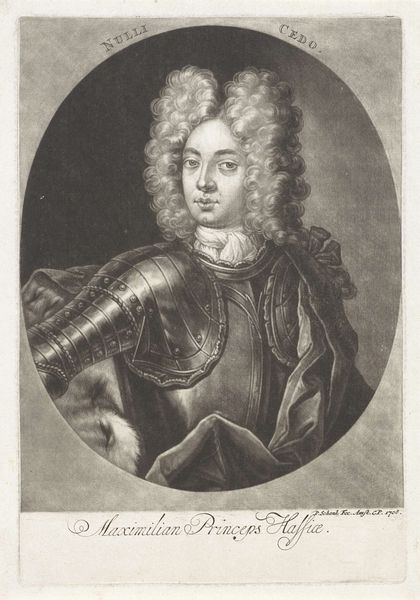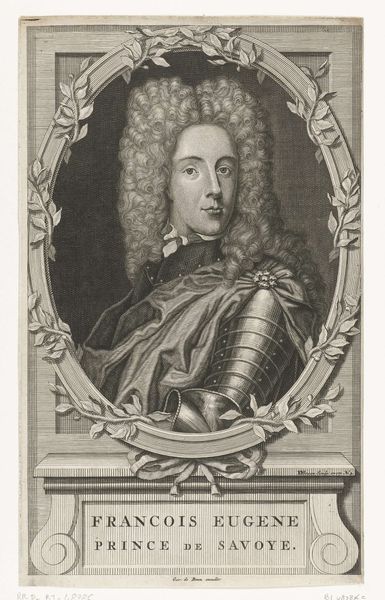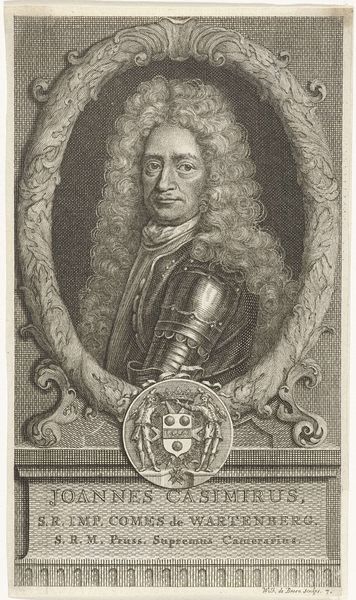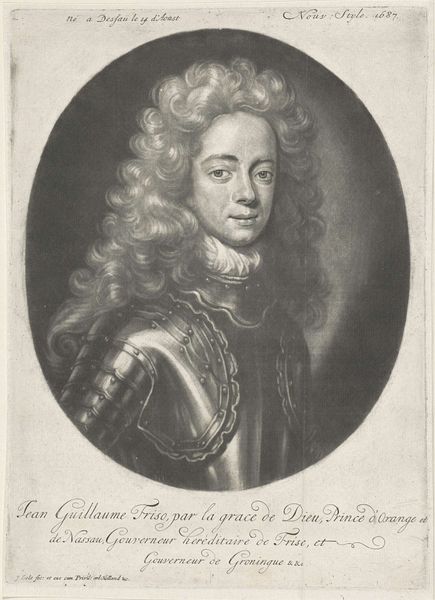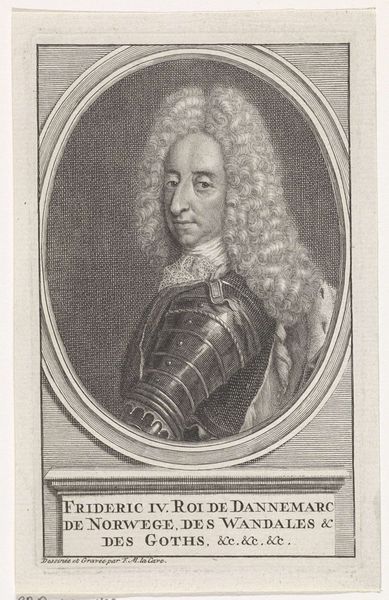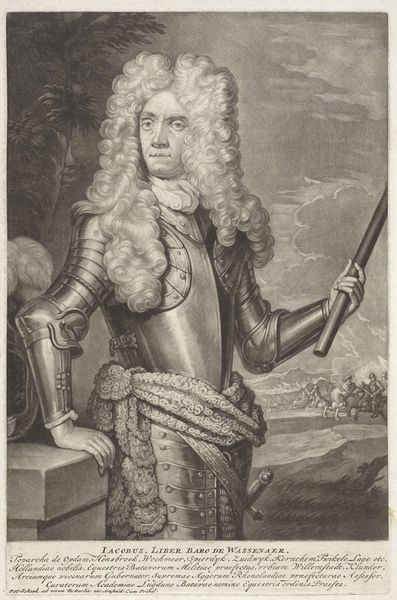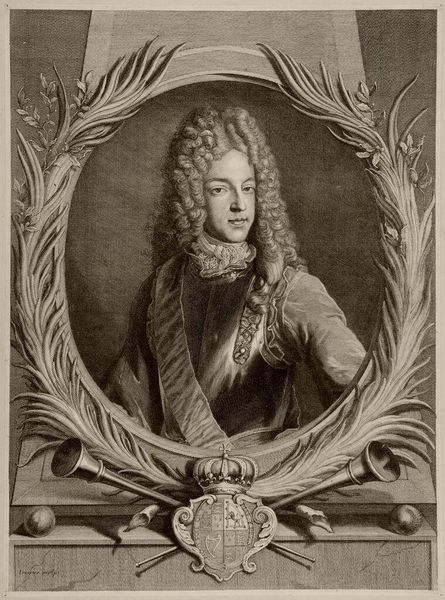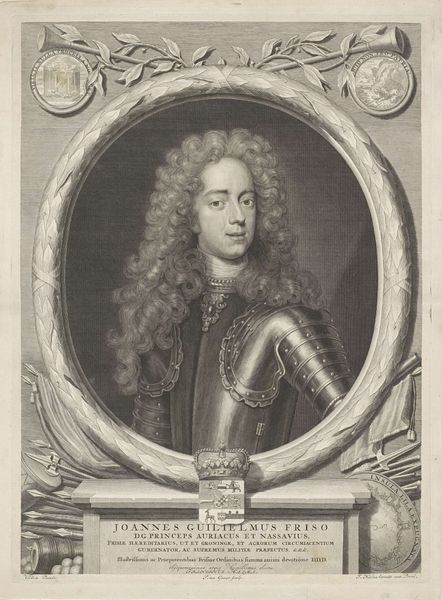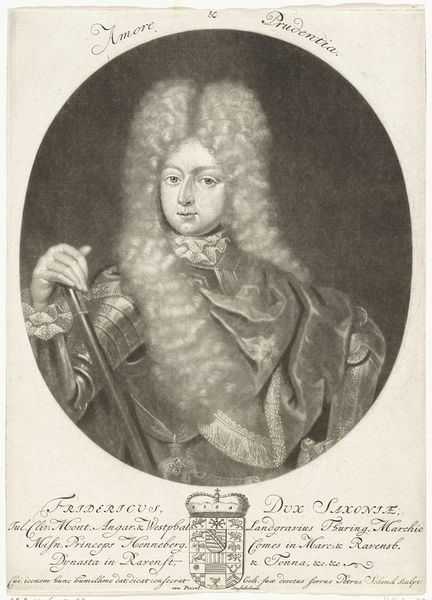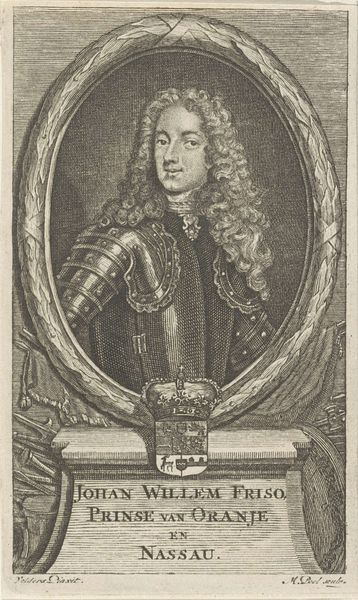
print, metal, engraving
#
portrait
#
baroque
# print
#
metal
#
old engraving style
#
pencil drawing
#
history-painting
#
engraving
Dimensions: height 249 mm, width 179 mm
Copyright: Rijks Museum: Open Domain
Curator: Here we see a striking print from between 1694 and 1713, titled "Portret van Augustus II, koning van Polen," or "Portrait of Augustus II, King of Poland," made by Pieter Schenk. It’s an engraving, using metal as its medium. Editor: My initial reaction is, “Wow, what a wig!” It’s the first thing that grabs your attention. It’s enormous, almost comical, but somehow it fits the overall regal tone of the portrait. It is like a lion's mane. Curator: The wig is certainly a significant symbol of status during the Baroque period, but I find my attention drawn to the armour. Note the elaborate detail, indicating both military prowess and the wealth required to commission such a piece. It’s almost like a visual representation of power, a protective shell projecting invincibility. Editor: It definitely gives him a powerful, almost imposing presence. Though the technique with the black and white is really quite remarkable considering it is so old, it actually takes some getting used to for the modern viewer. It makes you wonder about the artist's interpretation. Do you see a certain confidence or perhaps even a hint of vulnerability in his expression, given that the armour may indicate danger? Curator: The artist’s intent is an interesting question. What I do notice is the inscription at the top: "Omni fortunam provocat Sova Lucan 9 Thars" translates roughly to “Every brave man challenges fortune.” This allusion from Lucan’s Pharsalia links Augustus to classical heroism. He is not merely a king, but a figure battling against fate itself. The fur piece over the armor has its place. Editor: That shifts my perspective. I was caught up in the individual and the fashion statement, that I was failing to see the classical ideal woven into the piece. He becomes a symbol, an archetype, not just a person in armour and a huge wig. Curator: Precisely. It showcases not just the likeness, but the cultural values attached to leadership and power in that era. Editor: This makes the piece more compelling, knowing that it operates on different layers of meaning. Thanks! Curator: A pleasure. Thank you!
Comments
No comments
Be the first to comment and join the conversation on the ultimate creative platform.
